Transcription of Airport Concrete Pavement Technology Program - …
1 An IPRF Research Report Innovative Pavement Research Foundation Airport Concrete Pavement Technology Program Report IPRF-01-G-002-1 Best Practices for Airport Portland Cement Concrete Pavement Construction (Rigid Airport Pavement ) programs Management Office 1010 Massachusetts Avenue, Suite 200 Washington, DC 20001 April 2003 ACPA Document No. JP007P An IPRF Research Report Innovative Pavement Research Foundation Airport Concrete Pavement Technology Program Report IPRF-01-G-002-1 Best Practices for Airport Portland Cement Concrete Pavement Construction (Rigid Airport Pavement ) Principal Investigators Dr.
2 Starr D. Kohn, , Soil and Materials Engineers, Inc. Dr. Shiraz Tayabji, , Construction Technology Laboratories, Inc. Contributing Authors Mr. Paul Okamoto, Dr. Ray Rollings, Dr. Rachel Detwiller, Dr. Rohan Perera, Dr. Ernest Barenberg, Dr. John Anderson, Ms. Marie Torres Mr. Hassan Barzegar, Dr. Marshall Thompson, Mr. John Naughton, programs Management Office 1010 Massachusetts Avenue, Suite 200 Washington, DC 20001 April 2003 iThis report has been prepared by the Innovative Pavement Research Foundation (IPRF) under the Airport Concrete Pavement Technology Program . Funding is provided by the Federal Aviation Administration (FAA) under Cooperative Agreement Number 01-G-002. Dr. Satish Agrawal is the Manager of the FAA Airport Technology R&D Branch and the Technical Manager of the Cooperative Agreement. Mr. Jim Lafrenz is the IPRF Cooperative Agreement Program Manager.
3 The IPRF and the FAA thank the Technical Panel that willingly gave of their expertise and time for the development of this report. They were responsible for the oversight and the technical direction. The names of those individuals on the Technical Panel follow. Mr. Terry Ruhl, CH2M Hill Mr. Gary Fuselier Metropolitan Washington Airports Authority Mr. Gary Fick Duit Construction Company, Inc. Mr. Jeffrey Rapol FAA Project Technical Advisor The contents of this report reflect the views of the authors, who are responsible for the facts and the accuracy of the data presented within. The contents do not necessarily reflect the official views and policies of the Federal Aviation Administration. This report does not constitute a standard, specification, or regulation. iiACKNOWLEDGEMENTS The manual was prepared by the following project team members: Principal Investigators Dr. Starr D. Kohn, , Soil and Materials Engineers, Inc.
4 Dr. Shiraz Tayabji, , Construction Technology Laboratories, Inc. Contributing Authors Mr. Paul Okamoto, Dr. Ray Rollings, Dr. Rachel Detwiller, Dr. Rohan Perera, Dr. Ernest Barenberg, Dr. John Anderson, Ms. Marie Torres Mr. Hassan Barzegar, Dr. Marshall Thompson, Mr. John Naughton, The project team would like to acknowledge the contributions of the following: Mr. Terry Sherman, Mr. Gene Gutierrez and Mr. Richard Donovan, Army Corps of Engineers, who provided valuable feedback at various stages in the development of the manual. The staff of the Port Authority of New York and New Jersey, Memphis-Shelby County Airport Authority and Wayne County Department of Public Services who provided their time and arranged site visits and meetings with contractors, material suppliers and testing personnel. The staff of the following paving contractors and equipment suppliers: o Interstate Highway Construction, Inc., Englewood, Colorado o Ajax Paving Industries, Inc., Madison Heights, Michigan o Gunthert & Zimmerman Construction Division, Inc.
5 , Ripon, California o Gomaco Corporation, Ida Grove, Iowa. The project team would also like to acknowledge that the manual incorporates the collective experience of a broad range of experts who have, over the years, contributed so much to the developments in Airport Concrete Pavement construction Technology . As a result of their contributions, which have produced long lasting Concrete pavements, the United States enjoys one of the best aviation systems in the world. iii TABLE OF CONTENTS Page IPRF/FAA PREFACE .. i ACKNOWLEDGEMENTS .. ii NOTES FOR THE READER .. ix EXECUTIVE SUMMARY ..x 1. INTRODUCTION ..1 Scope ..2 Disclaimer ..2 Quality in Constructed Projects ..2 2. CONSIDERATION OF DESIGN ISSUES ..4 Construction Summary ..7 3. PRE-CONSTRUCTION ACTIVITIES.
6 9 Construction Specification Issues ..9 Civil (Private Sector) Construction Specifications ..9 Military Construction Specifications ..10 Planning Construction Logistics ..10 Fast Track Construction and Opening Pavement to Traffic ..11 Opening Pavement to Pre-Bid Meetings ..13 Pre-Award Meetings ..14 Pre-Construction Meetings ..14 Qualifying Construction Materials ..15 Evaluation of Local Availability and Certification of Cementitious Availability and Certification of Admixtures & Curing Specifying Project QMP/CQC iv Basic QMP/CQC General Issues.
7 24 Quality Management Contractor QC versus Agency QA (or Acceptance) Testing Responsibilities ..26 Test Strip Construction ..26 Test Strip Test Strip Acceptance ..31 Consideration of Changes in Contractor and QMP/CQC Operations ..31 4. GRADE PREPARATION ..32 Grading and Compacting Subgrade ..32 Pre-Grading Activities ..32 Removal of Unsuitable Subgrade ..33 Protection of Grade ..33 Grading Operations ..33 Compaction Subgrade Stabilization ..36 Lime Stabilization ..36 Cement Stabilization.
8 38 Contingencies for Localized Areas ..38 Proof-Rolling ..39 Acceptance of Protection of Grade ..39 Adverse Weather Conditions ..40 Troubleshooting Guide ..40 5. BASE AND SUBBASE Subbase Course ..41 Mechanically Stabilized Base Chemically Stabilized Cement Treated Base ..43 Lean Concrete (Econocrete) ..44 Asphalt Treated Base ..45 v Drainage Layers ..46 Stabilized Base Issues ..46 Troubleshooting Guide.
9 47 6. GETTING READY FOR Concrete PAVING ..48 Grade Acceptance ..48 Concrete Plant Operation ..49 Managing the Aggregate Concrete Uniformity Testing ..51 Paving Equipment Issues ..52 Stringline Issues ..52 7. Concrete MIXTURE ..54 Concrete Mixture Requirements ..55 Laboratory Mixture Design Process ..56 Concrete Mixture Design Issues ..57 Workability ..57 Strength ..58 Sulfate Resistance.
10 59 Air Entrainment ..60 Blended Cements and Supplementary Cementitious Materials Aggregate Aggregate The Case of Slag Aggregates ..65 The Case of Recycled Concrete Field Adjustments of Concrete Mixture Design ..65 Troubleshooting Guide ..67 8. Concrete PLACEMENT, FINISHING, TEXTURING, AND Concrete Delivery at the Site ..70 Concrete Placement ..71 Embedded Steel and Tie-Bar vi Dowel Bar Installation ..73 Dowel Bars at Construction Concrete Concrete Finishing ..78 Concrete Texturing.
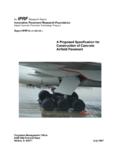



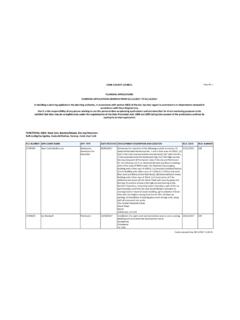
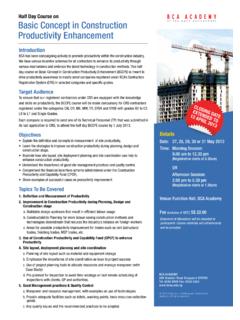

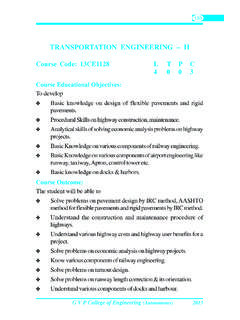
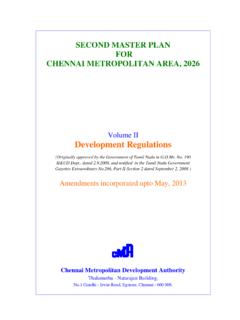
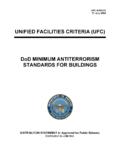
![Untitled-1 [www.moef.nic.in]](/cache/preview/0/7/5/4/5/e/c/5/thumb-07545ec5a24fcdf0c4f7836434cadcc8.jpg)